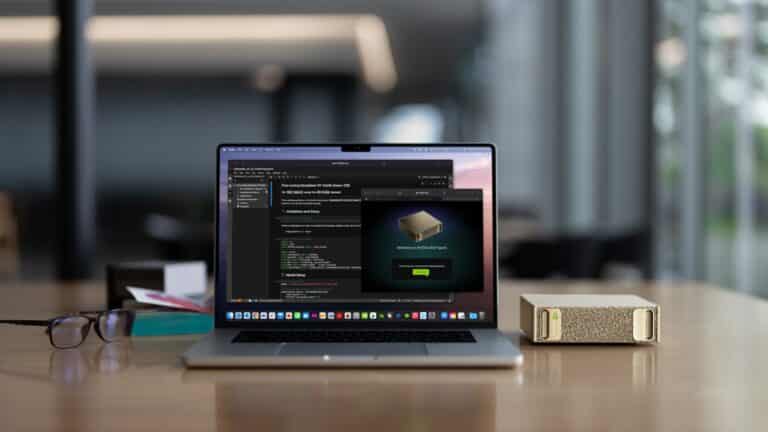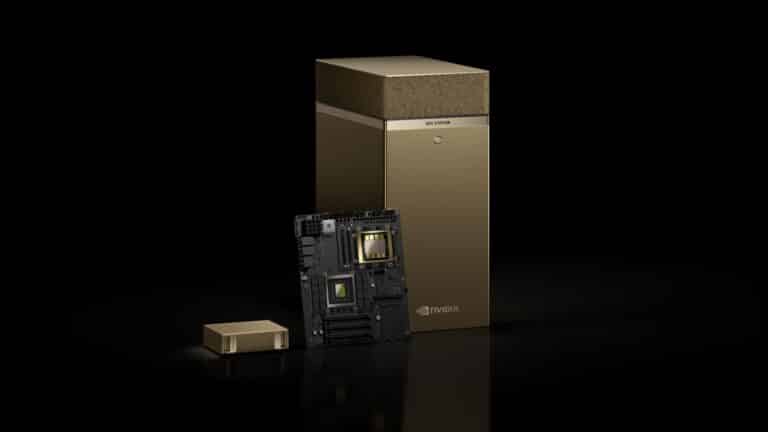Nvidia has unveiled two groundbreaking “personal AI supercomputers” that bring unprecedented computing power to desktop environments. The DGX Spark and DGX Station, announced at Nvidia’s GTC conference, represent a new class of AI-focused computers designed specifically for developers working with large language models and complex AI applications.
“AI has transformed every layer of the computing stack. It stands to reason a new class of computers would emerge — designed for AI-native developers and to run AI-native applications,” explained Jensen Huang, founder and CEO of Nvidia. “With these new DGX personal AI computers, AI can span from cloud services to desktop and edge applications.”
These systems are built on Nvidia’s Grace Blackwell platform, previously available only in datacenter environments, and aim to democratize access to high-performance AI computing resources for researchers, data scientists, and students.
DGX Spark: Compact Powerhouse for AI Development
The DGX Spark, initially previewed as “Digits” at CES earlier this year, packs remarkable AI capabilities into a compact form factor comparable to Apple’s Mac Mini. This $3,000 system is now available for preorder with deliveries expected this summer.
Technical Specifications and Capabilities
At the core of the DGX Spark is the NVIDIA GB10 Grace Blackwell Superchip, specifically optimized for desktop use. The GB10 features:
- A Blackwell GPU with fifth-generation Tensor Cores
- FP4 precision support
- Up to 1,000 trillion operations per second (TOPS) of AI compute
- 128GB of unified memory
- Up to 4TB of NVMe SSD storage
The system leverages Nvidia’s NVLink-C2C interconnect technology, delivering a CPU+GPU-coherent memory model with five times the bandwidth of fifth-generation PCIe. This architecture optimizes performance for memory-intensive AI workloads by enabling efficient data access between the GPU and CPU.
Practical Applications
The Spark’s capabilities make it ideal for fine-tuning and inference with advanced AI reasoning models, including Nvidia’s own Cosmos Reason world foundation model and GR00T N1 robot foundation model. Developers can prototype complex AI applications directly on their desktop, then seamlessly transfer their work to larger infrastructure when needed.
For example, a robotics researcher could use code like this to access the DGX Spark’s computing power for robot training. Here is an example pseudocode:
import torch
from nvidia_gr00t import GR00TN1Model
# Initialize the GR00T N1 model on local DGX Spark hardware
model = GR00TN1Model.from_pretrained("nvidia/gr00t-n1-base")
model = model.to("cuda") # Utilize the Blackwell GPU
# Define robot control parameters
robot_actions = model.generate_actions(
sensor_input=sensor_data,
environment_context=environment_data,
max_sequence_length=512
)
DGX Station: Desktop Supercomputing for Demanding Workloads
For users requiring even more computational power, the DGX Station represents a significant step up in capabilities. While larger than the Spark, it delivers performance previously found only in data centers.
Advanced Architecture for Professional Applications
The DGX Station is built around the more powerful GB300 Blackwell Ultra Desktop Superchip, which provides:
- 20 petaflops of AI performance
- 784GB of unified system memory
- Latest-generation Tensor Cores with FP4 precision
- NVIDIA Grace CPU connected via NVLink-C2C
Additionally, the Station features the NVIDIA ConnectX-8 SuperNIC, supporting networking speeds up to 800Gb/s. This enables high-speed connectivity between multiple DGX Stations for tackling larger workloads and accelerating data transfers for AI applications.
Enterprise-Grade Software Support
Users of the DGX Station gain access to NVIDIA NIM microservices through the NVIDIA AI Enterprise software platform. This provides optimized, deployment-ready inference microservices with enterprise support, making the Station suitable for professional development environments.
Industry Collaboration and Availability
Nvidia has partnered with leading computer manufacturers to bring these systems to market. The DGX Spark will be produced by ASUS, Dell, HP, and Lenovo, while the DGX Station will be available from ASUS, BOXX, Dell, HP, Lambda, and Supermicro.
Reservations for DGX Spark systems are already open through Nvidia’s website, with deliveries expected this summer. The DGX Station is anticipated to be available from manufacturing partners later this year, though no price point has been announced yet.
Nvidia’s entry into the desktop AI supercomputing space comes as competitors are also developing solutions for local large language model work. AMD has introduced the Ryzen AI Max+ “Strix Halo,” which HP is incorporating into laptops and Framework is using in a $2,000 desktop. These competing solutions offer up to 96GB of VRAM for the GPU.
However, Nvidia’s systems are distinguished by their tight integration with the company’s broader AI ecosystem, allowing for seamless scaling from desktop development to cloud deployment.
Transforming the AI Development Workflow
The introduction of these personal AI supercomputers represents a significant evolution in how AI development can be approached. Rather than relying exclusively on cloud resources or datacenter access, developers can now iterate on large models locally, reducing dependencies and potentially accelerating development cycles.
This shift could particularly benefit academic researchers, independent developers, and smaller organizations that previously faced barriers to entry in large model development due to infrastructure requirements.
By enabling local development with the ability to deploy to larger infrastructure without code changes, Nvidia is creating a more flexible development pathway that may lead to greater innovation and experimentation in the AI space.
With the DGX Spark and DGX Station, Nvidia is bringing datacenter-class AI computing capabilities to desktop environments These systems represent a new category of computing hardware specifically designed for the demands of modern AI workloads, combining powerful processing capabilities with the convenience and accessibility of desktop form factors.
As these systems become available through Nvidia and its manufacturing partners, they could significantly expand the community of developers able to work directly with large language models and complex AI applications.
If you are interested in this topic, we suggest you check our articles:
- Nvidia’s New Era: Personal Supercomputers Are Coming To You
- AI-Powered Supercomputers: Advancing Technology and Innovation
Written by Alius Noreika


